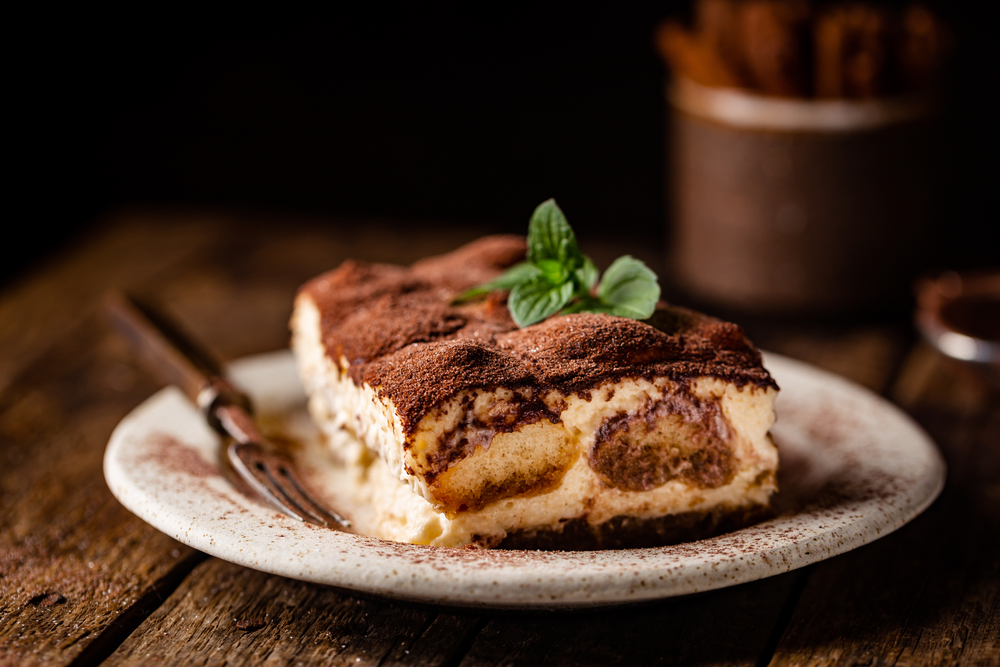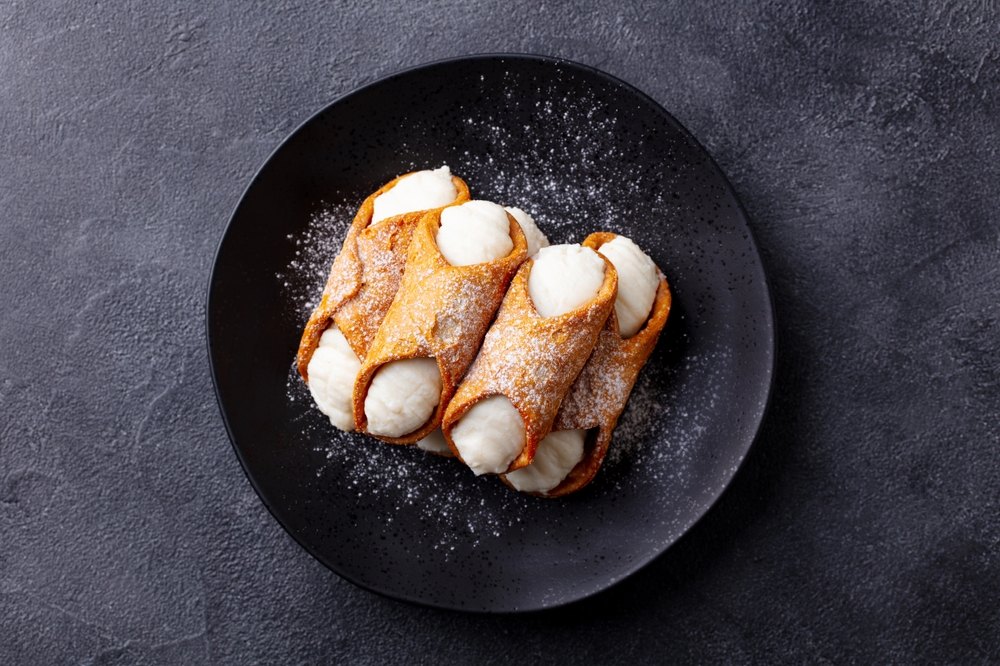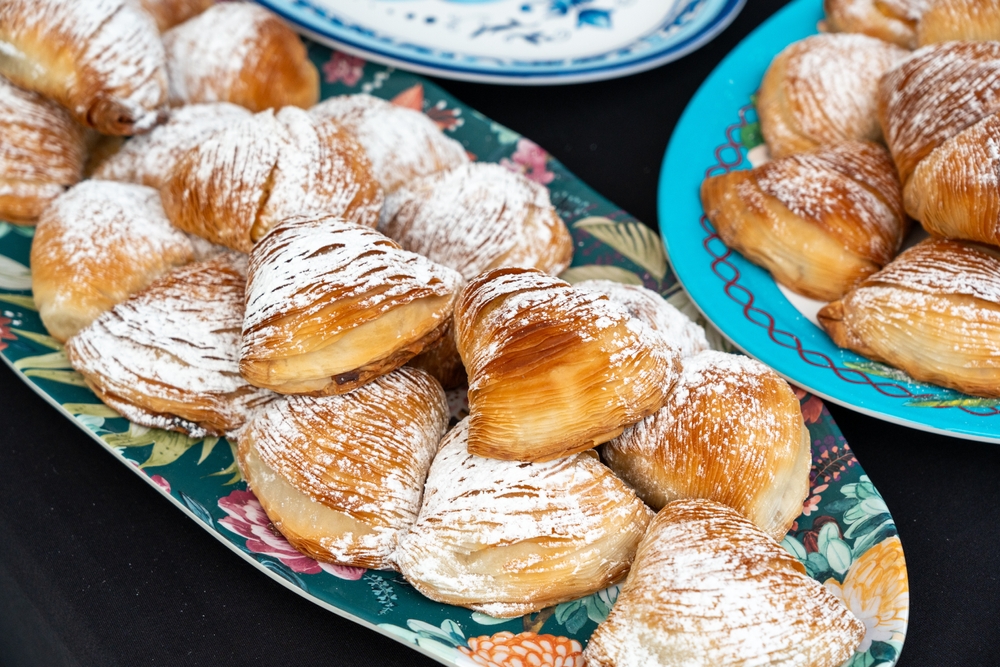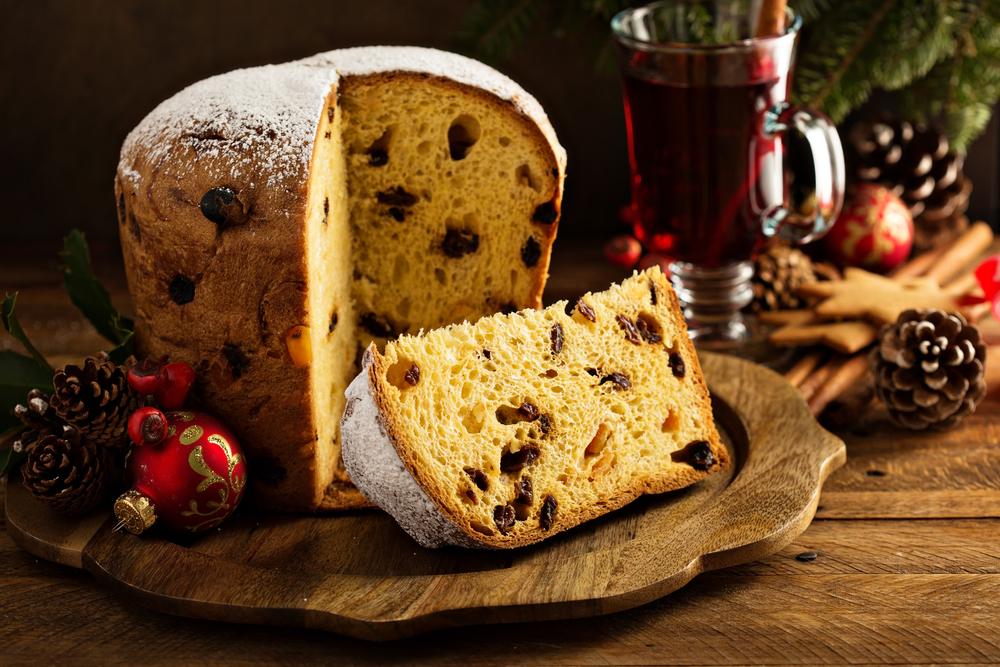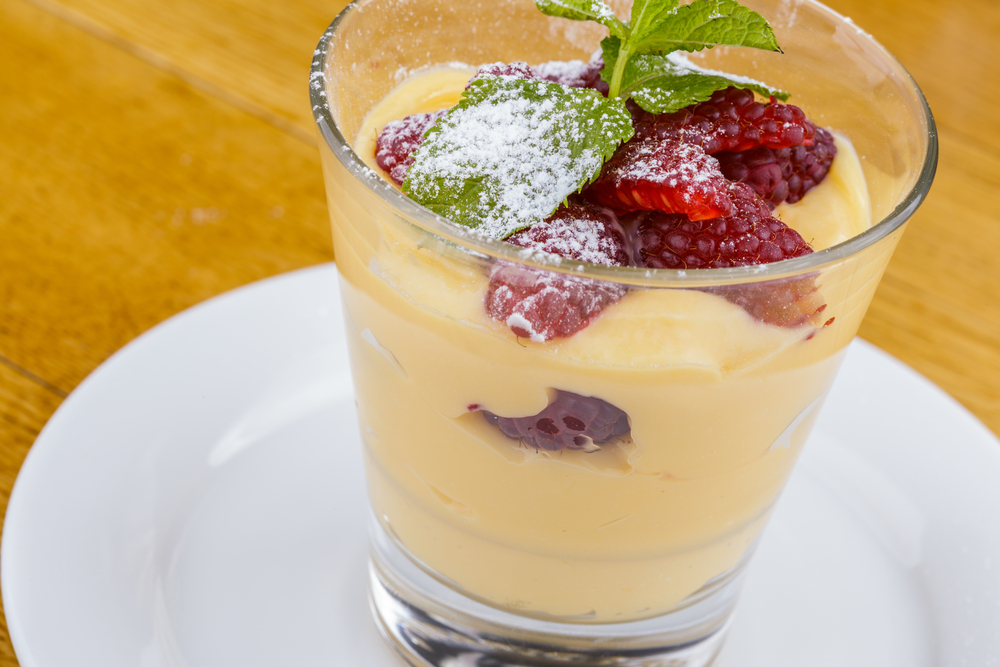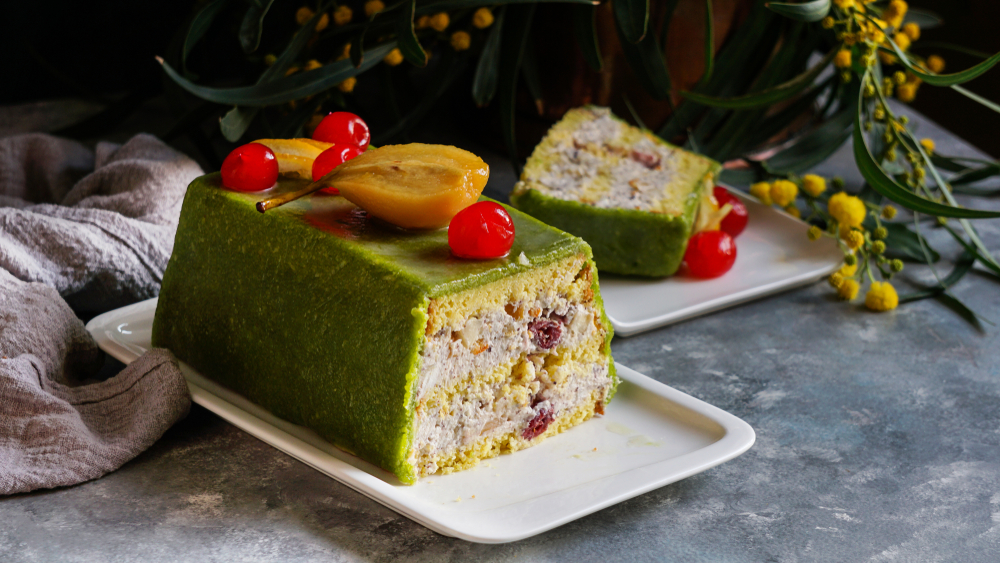Italian desserts have captivated sweet-toothed food lovers for centuries with their perfect balance of flavors and textures. From creamy custards to crispy pastries, these treats showcase Italy’s rich culinary heritage and regional diversity. Whether enjoyed after a hearty meal or with afternoon coffee, these nine classic Italian desserts continue to delight generation after generation.
1. Tiramisu: Coffee-Soaked Layers of Heaven
The name literally means “pick me up” in Italian, and this beloved dessert certainly lifts spirits with its alternating layers of coffee-soaked ladyfingers and mascarpone cream. Born in the Veneto region during the 1960s, tiramisu quickly spread throughout Italy and beyond.
The traditional recipe includes just a few simple ingredients: espresso, mascarpone cheese, eggs, sugar, ladyfinger cookies, and a dusting of cocoa powder. No fancy equipment needed!
While modern variations might include alcohol like Marsala wine or rum, or additions like chocolate shavings, the classic version remains unbeatable for its perfect balance of bitter coffee and sweet cream.
2. Cannoli: Sicily’s Crispy Cream-Filled Treasures
These iconic tube-shaped pastries originated in Sicily and have become one of Italy’s most recognizable sweet exports. Crispy fried pastry shells cradle a rich, sweet filling of ricotta cheese, often studded with chocolate chips or candied fruit.
According to legend, cannoli were first created during Carnevale season as a fertility symbol. The contrast between the crunchy exterior and creamy filling creates an irresistible textural experience.
Authentic cannoli are filled just before serving to prevent the shells from softening. A sprinkle of powdered sugar and perhaps some chopped pistachios at each end completes these hand-held delights.
3. Panna Cotta: Silky Custard with Endless Possibilities
Hailing from the Piedmont region in northern Italy, panna cotta (literally “cooked cream”) is elegance in simplicity. This molded custard dessert achieves its silky texture through a perfect balance of cream, sugar, and just enough gelatin to hold its shape while maintaining a delicate wobble.
Traditional versions are flavored with vanilla bean and served with fresh berries or caramel sauce. The dessert should quiver slightly when touched – if it bounces like rubber, there’s too much gelatin!
What makes panna cotta special is its versatility. Modern Italian chefs experiment with flavors from coffee to saffron while maintaining the dessert’s characteristic smooth, melt-in-your-mouth consistency.
4. Gelato: Italy’s Answer to Ice Cream
Gelato isn’t just Italian ice cream – it’s a creamy, intensely flavored frozen treat with less fat and air than American versions. This creates a denser, silkier texture that melts more quickly on the tongue, releasing powerful flavor with each spoonful.
Artisanal gelaterias across Italy showcase regional specialties and seasonal ingredients. Pistachio, stracciatella (chocolate chip), and nocciola (hazelnut) rank among the most beloved traditional flavors.
Gelato-making is considered an art form in Italy, with many shops still using techniques passed down through generations. The best gelato contains natural ingredients without artificial colors – that vibrant pistachio should come from actual nuts, not food dye!
5. Sfogliatelle: Flaky Seashell Pastries from Naples
One glance at sfogliatelle (singular: sfogliatella) reveals how they earned their nickname “lobster tails.” These seashell-shaped pastries from Naples feature dozens of paper-thin layers that crisp up beautifully when baked, creating a distinctive crackling sound with each bite.
The traditional filling combines semolina, ricotta, cinnamon, and candied citrus peel. Making sfogliatelle requires extraordinary patience and skill – the dough must be stretched impossibly thin, then rolled into a log and sliced before shaping.
Two main varieties exist: riccia (the ridged, flaky version) and frolla (with a smoother shortcrust pastry exterior). Either way, these labor-intensive treats remain worth every minute of effort when you taste the contrast between crisp shell and sweet filling.
6. Panettone: Milan’s Holiday Bread That Transcends Seasons
A tall, dome-shaped sweet bread studded with candied fruits and raisins, panettone originated in Milan but now appears on Italian tables nationwide during Christmas. Its distinctive airy texture comes from a natural yeast starter that requires multiple proofing cycles – sometimes taking days to develop.
Legend claims a baker named Toni created the first “pane di Toni” (Toni’s bread) to impress a nobleman’s daughter. The traditional version contains butter, eggs, flour, sugar, and candied citrus, though chocolate chip varieties have become popular.
While historically a holiday treat, panettone’s popularity has made it available year-round. Italians debate whether to eat it plain, toasted with butter, or even transformed into French toast the next day.
7. Zabaglione: The Frothy Custard That Warms the Soul
This light, frothy custard dates back to 16th century Turin and demonstrates how Italians can transform simple ingredients into something magical. Made by whisking egg yolks, sugar, and sweet wine (traditionally Marsala) over gentle heat, zabaglione creates a warm, airy dessert that can be enjoyed on its own or as a sauce.
The name likely derives from the Piedmontese word “zabajoun,” though legends connect it to a Franciscan friar named Pasquale de Baylon who created it for noble families. The dessert requires constant whisking to achieve its characteristic foam.
Served warm in glasses with perhaps some berries or crumbled cookies, zabaglione makes a comforting winter treat. When chilled, it transforms into a lovely accompaniment for fresh summer fruits.
8. Cassata Siciliana: Sicily’s Colorful Celebration Cake
This elaborate Sicilian cake showcases the island’s history of Arab, Norman, and Spanish influences. A rich mixture of sweetened ricotta cheese, candied fruits, and chocolate chips fills a mold lined with liqueur-soaked sponge cake, all covered with bright green marzipan and decorated with candied fruits.
Cassata’s origins trace back to Arab rule in Sicily around the 10th century. The name likely comes from the Arabic “qas’at,” meaning bowl, referring to the round mold traditionally used.
Traditionally served at Easter, this festive dessert now appears at special occasions year-round. The vivid colors and elaborate decorations make it as much a feast for the eyes as for the palate – a true celebration of Sicilian artistry.
9. Torta Caprese: Chocolate-Almond Decadence from Capri
Named after the island of Capri where it originated, this flourless chocolate cake delivers intense richness through just a few ingredients: dark chocolate, butter, sugar, eggs, and ground almonds. Its lack of flour makes it naturally gluten-free and gives it a distinctive fudgy interior beneath a crackly top.
Legend says the cake was created by accident when a chef forgot to add flour to a chocolate cake being prepared for American gangsters visiting the island in the 1920s. The mistake turned out to be a delicious discovery!
Traditionally dusted with powdered sugar and served with a dollop of whipped cream, Torta Caprese proves that simplicity often yields the most memorable desserts. The almond-chocolate combination creates perfect harmony in every bite.

